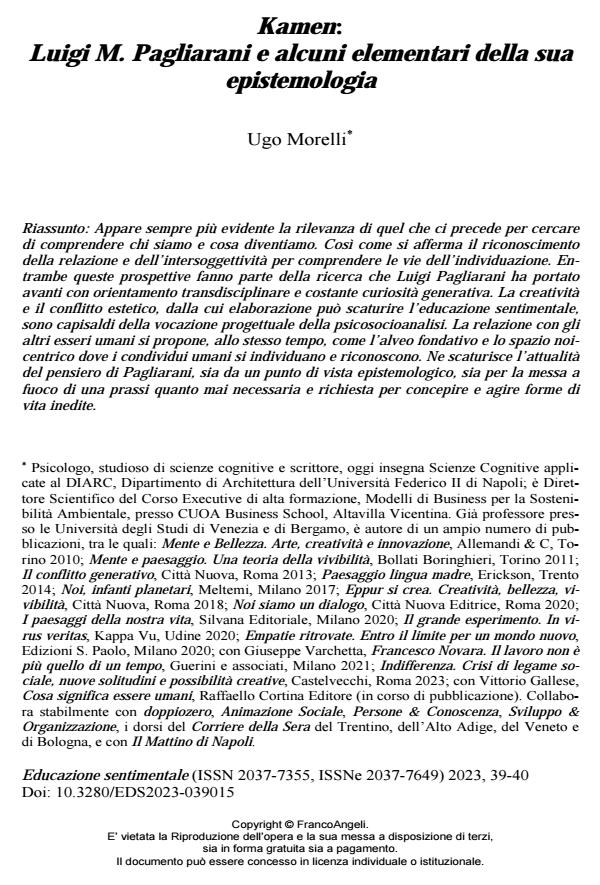Kamen: Luigi M. Pagliarani e alcuni elementari della sua epistemologia
Journal title EDUCAZIONE SENTIMENTALE
Author/s Ugo Morelli
Publishing Year 2024 Issue 2023/39-40
Language Italian Pages 21 P. 195-215 File size 260 KB
DOI 10.3280/EDS2023-039015
DOI is like a bar code for intellectual property: to have more infomation
click here
Below, you can see the article first page
If you want to buy this article in PDF format, you can do it, following the instructions to buy download credits

FrancoAngeli is member of Publishers International Linking Association, Inc (PILA), a not-for-profit association which run the CrossRef service enabling links to and from online scholarly content.
Kamen: Luigi M. Pagliarani and some basics of his epistemology. The relevance of what precedes us in trying to understand who we are and what we become appears in-creasingly evident. Just as the recognition of relationships and intersubjectivity is af-firmed to understand the paths of identification. Both of these perspectives are part of the research that Luigi Pagliarani has carried out with a transdisciplinary orientation and constant generative curiosity. Creativity and aesthetic conflict, from the elaboration of which sentimental education can arise, are cornerstones of the planning vocation of psychosocioanalysis. The relationship with other human beings is proposed, at the same time, as the foundational bed and the us-centric space where human beings identify and recognize each other. The relevance of Pagliarani’s thought arises from this, both from an epistemological point of view and for the focus on a practice that is more necessary and required than ever to conceive and act on new forms of life.
Keywords: puer, origin, antecedent, creativity, action, intersubjectivity, relationship.
Ugo Morelli, Kamen: Luigi M. Pagliarani e alcuni elementari della sua epistemologia in "EDUCAZIONE SENTIMENTALE" 39-40/2023, pp 195-215, DOI: 10.3280/EDS2023-039015